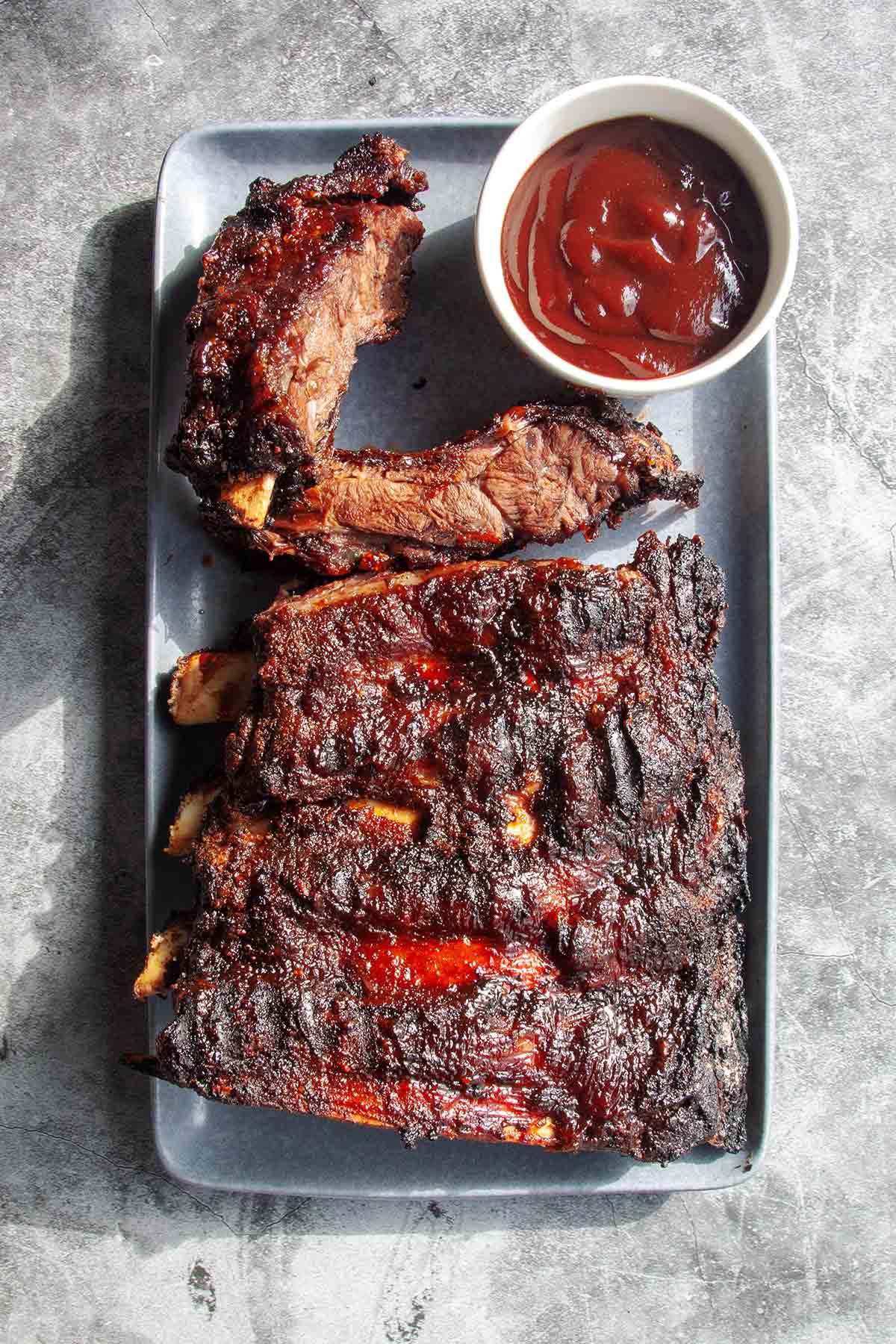
You’ll usually see beef back ribs in 4-to 6-bone pieces, and they typically don’t have much meat on them. They’re generally pretty cheap, and that’s a good thing because, like I said, there isn’t much meat on them.
The meat needs a lot of cooking to make it tender, but when it’s cooked right, it’s really good eats, so it’s worth the effort. Wrapping these in foil is essential to get them tender.
If you’re the adventurous type, add a half cup of strong coffee to the package when you wrap the ribs. I think you’ll find it to be a pleasant surprise.–Ray Lampe

Why Our Testers Loved This
Our testers were smacking their lips and licking their fingers after devouring these grilled beef ribs. They loved the minimal effort and relaxed process of making them. Dan Kraan summed it up best, commenting, “Recipes like these barbecued beef back ribs come down to the rub and the cooking technique, and these don’t disappoint in either department.”
Notes on Ingredients
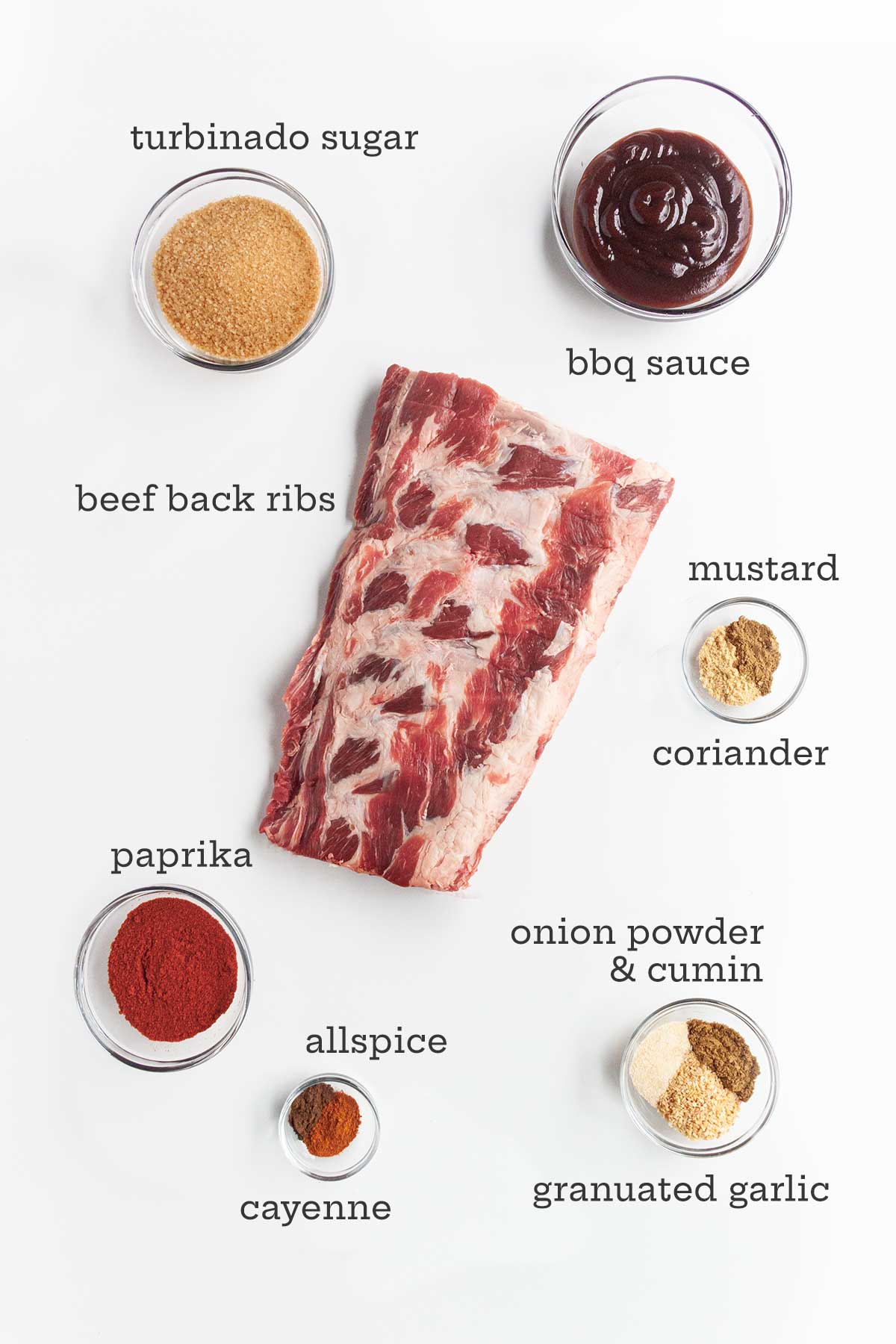
- Salt–Depending on how salty you like your grilled meat, you can adjust the salt level in the rub. Start with 1/4 cup, and after your rub is mixed up, take a taste and adjust from there.
- Beef back ribs–You’ll need 2 or 3 racks for this recipe. To save time, ask your butcher to remove the membrane on the back of the ribs for you.
- Barbecue sauce–Keep in mind that the rib rub has plenty of salt, so you want to choose a sauce that isn’t too salty.
Step-by-Step Instructions
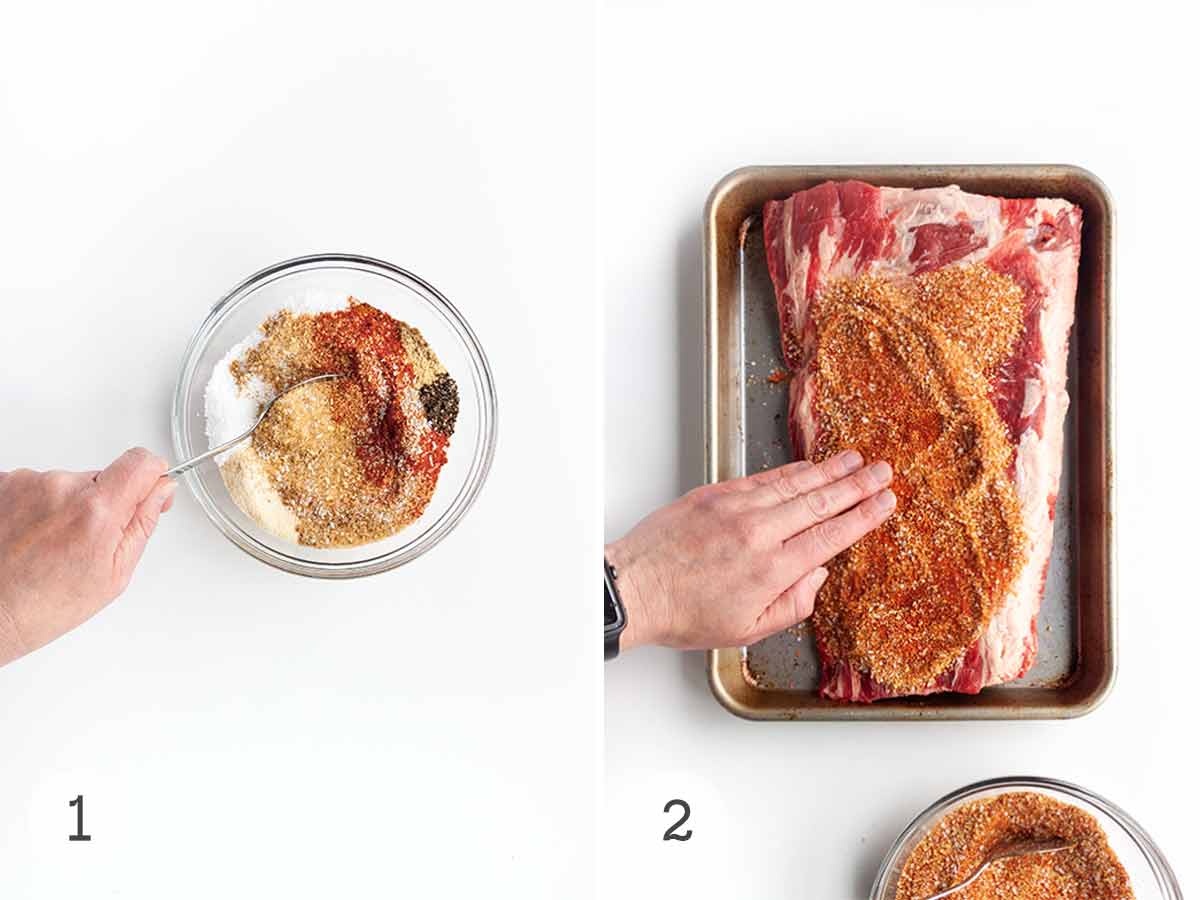
- Mix the spice rub ingredients together in a medium bowl. Taste and adjust the salt level, if desired.
- Season the ribs on both sides with the rub.
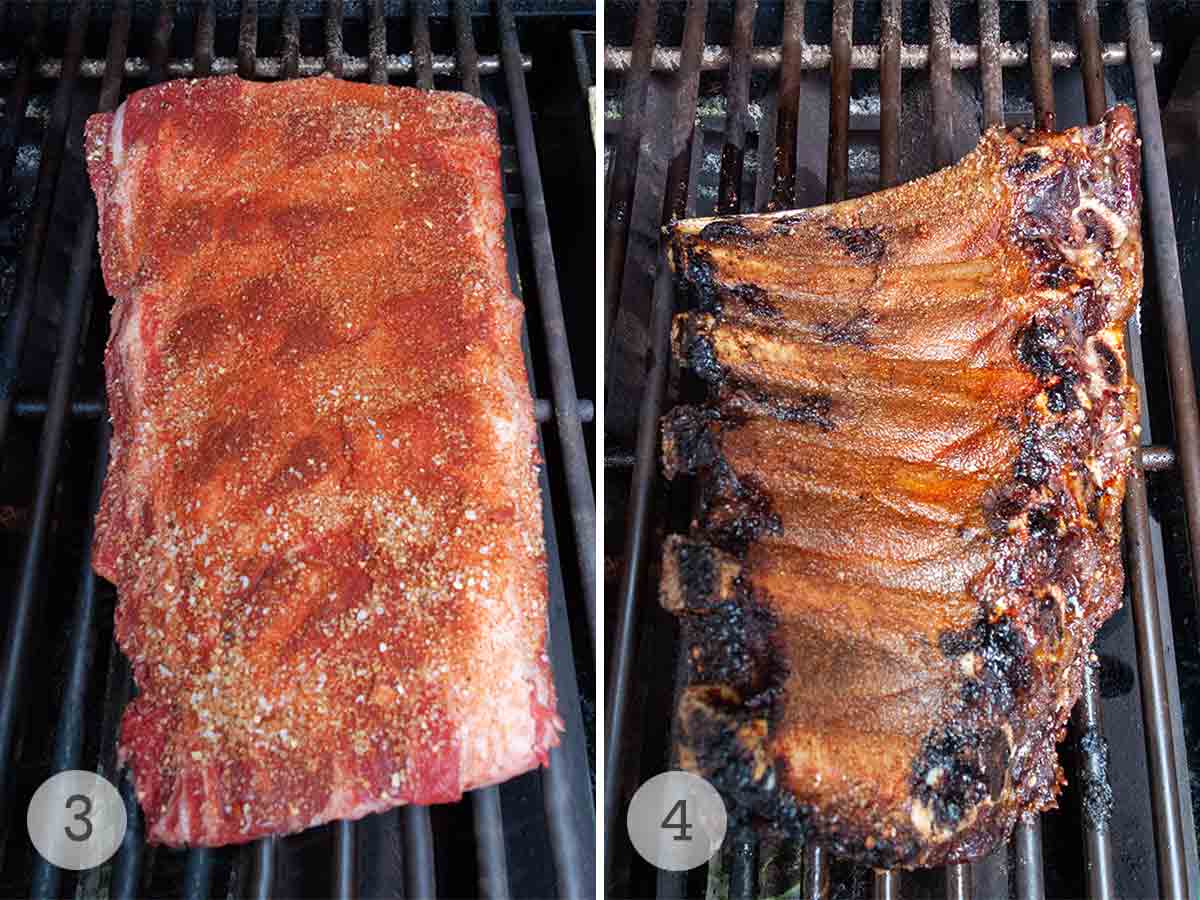
- Prepare a grill for indirect cooking at 250°F. Place the ribs on the grates, meaty-side up, and cook for 2 1/2 hours.
- Flip the ribs over. Cook for 30 minutes more.
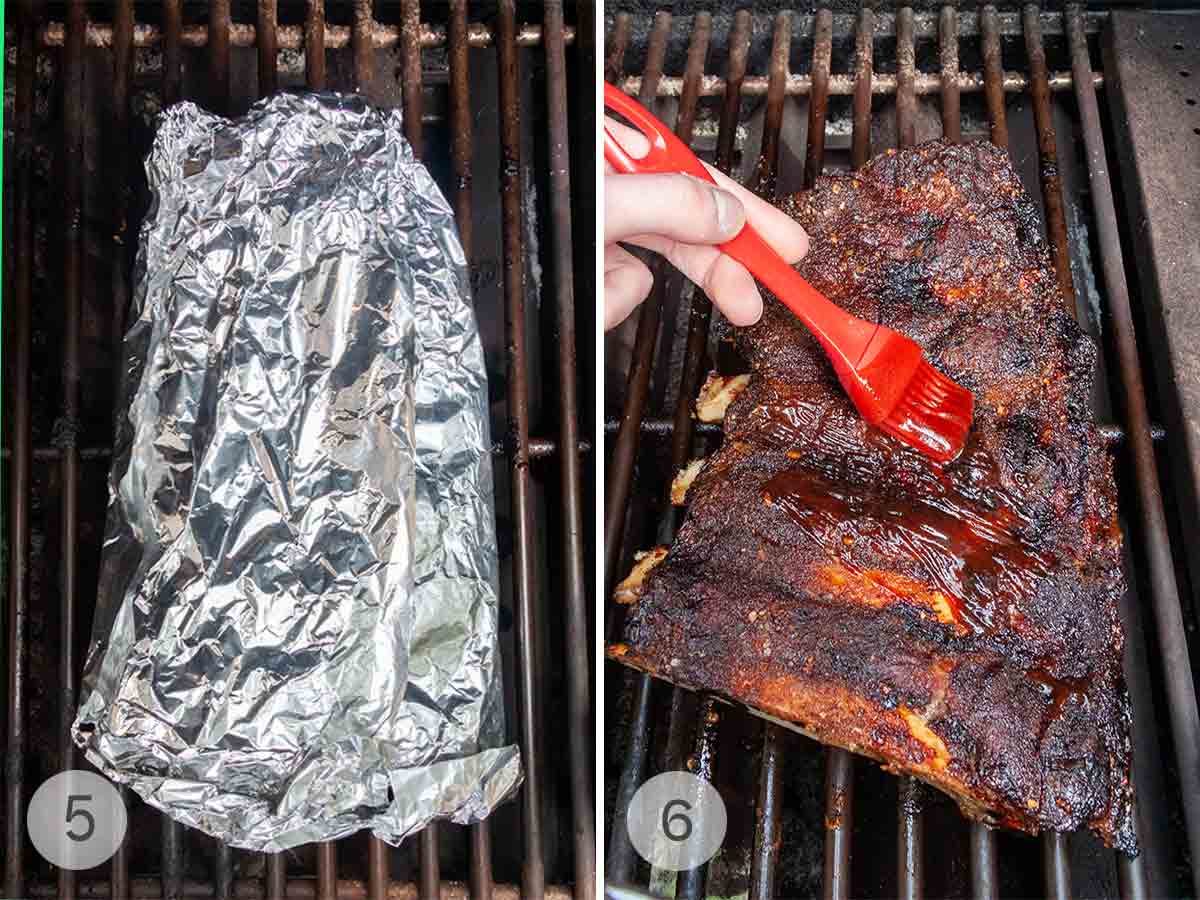
- Wrap the ribs in a double layer of aluminum foil. Cook on the grill for 1 hour.
- Increase the grill temperature to 400°F. Unwrap the ribs and brush them with barbecue sauce. Grill until the ribs are lightly charred.
Common Questions
Want to Save This?
Beef back ribs are what is left once a butcher removes the prime rib and ribeye steaks. There isn’t a lot of beef left at the top of the bones but what’s left between those ribs is meaty, fatty, and deliciously tender. They also have the very same marbling and flavor as prime rib and ribeye, so you really can’t go wrong.
You’ll often see them in abundance around Christmas and New Year’s when people are buying a lot of rib roasts. Typically, a rack of ribs comes in either 4- to 6 or 8- to 12- chunks. You’ll need at least 2 to 3 ribs per person.
Note that they are different from beef short ribs, which are shorter and flatter.
These would go very well served with barbecue beans and potato salad.
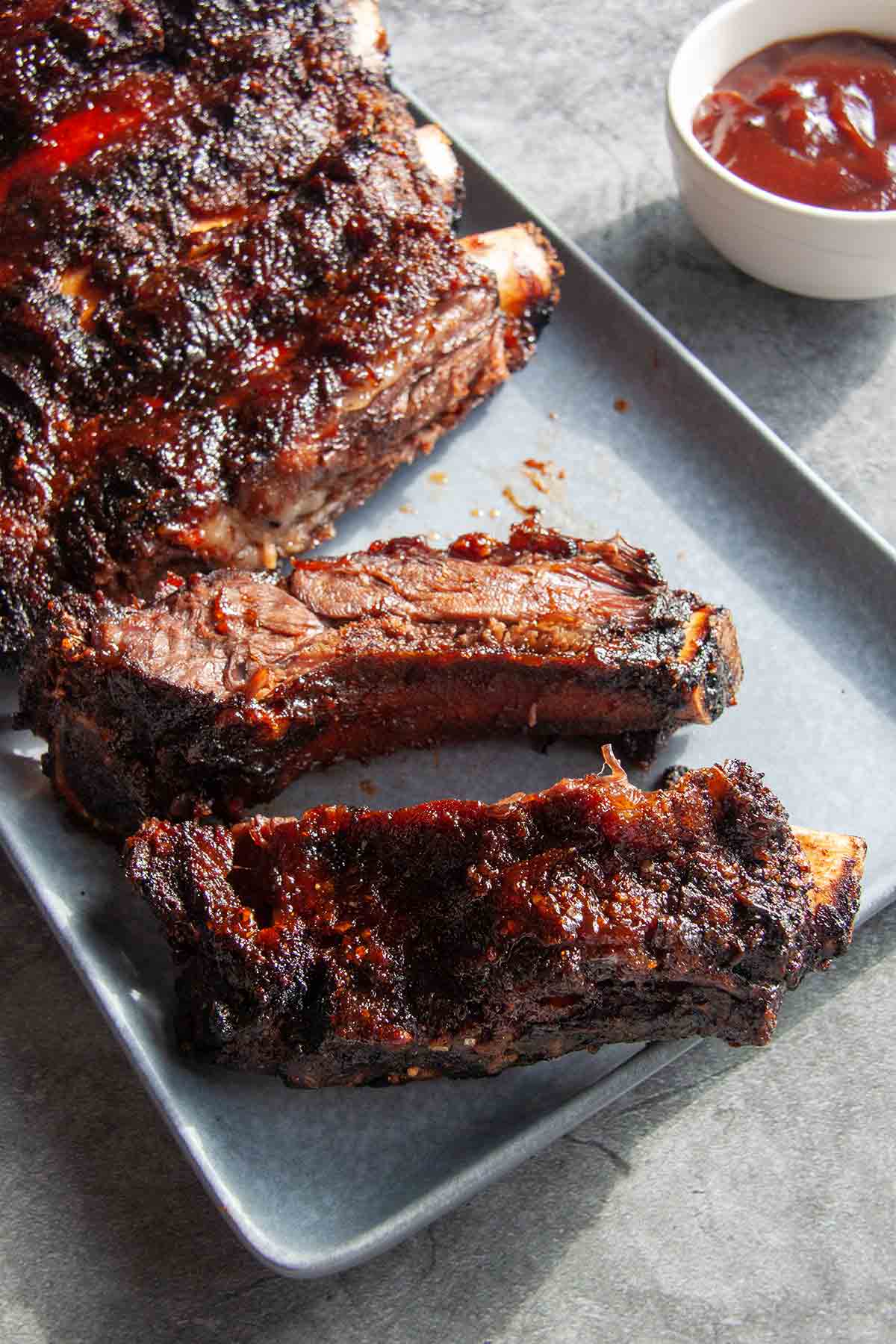
Pro Tips & Troubleshooting
- The rub makes about 1 1/2 cups, which is more than you may need for the recipe. It can be stored in an airtight container at room temperature for several weeks. Try using extra rub for making smoked pork ribs.
- When seasoning the ribs, use your fingers to massage the rub deeply into the meat to help it stick.
- Leftover ribs can be stored in the refrigerator for up to 3 days. Rewarm in a 300°F oven or on the grill over low heat.
Write a Review
If you make this recipe, or any dish on LC, consider leaving a review, a star rating, and your best photo in the comments below. I love hearing from you.–David
These ribs came out rich, juicy, tender and amazing.
John b.
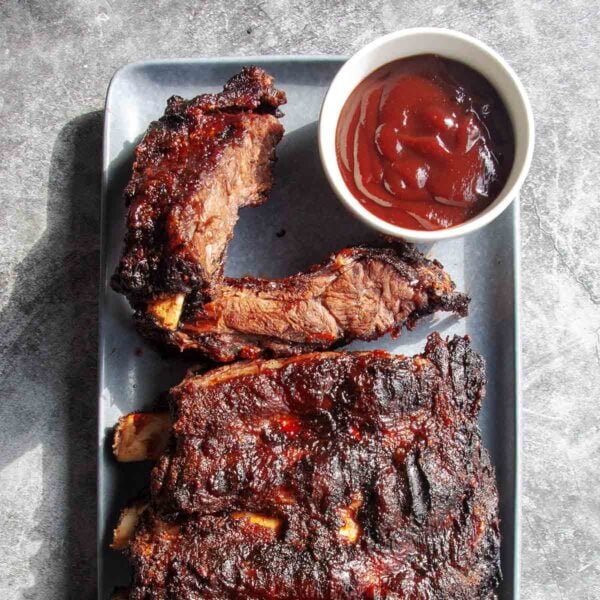
Barbecued Beef Back Ribs
Ingredients
For the rub
- 3/4 cup raw or turbinado sugar
- 1/4 cup kosher salt, or more, depending on your tolerance for the stuff (up to 1/2 cup)
- 1/4 cup paprika
- 2 tablespoons finely ground black pepper
- 1 tablespoon granulated garlic
- 1 tablespoon onion powder
- 1 tablespoon ground cumin
- 1 teaspoon dry mustard
- 1 teaspoon ground coriander
- 1/2 teaspoon cayenne pepper
- 1/2 teaspoon ground allspice
For the ribs
- 5 pounds beef back ribs
- 2 cups your favorite barbecue sauce
Instructions
Make the rub
- Combine all the ingredients. Mix well and take a taste. If it needs more salt, shake some in.
Prepare the ribs
- Peel the membrane off the back side of the ribs and discard it. (It tends to be sort of slippery. If you have a hard time getting a grip, try sliding a bowl-side down spoon under there to loosen up a piece, then grab it with a paper towel and see if that helps.) Season the ribs liberally on both sides with some of the rub.
- Prepare the grill for cooking over indirect heat at 250° F (121°C) using oak or hickory wood. Place the ribs, meaty side up, directly on the grill grate. Cook for 2 1/2 hours, maintaining the temperature of the grill as steady as possible.
- Flip the ribs and cook for 30 minutes more.
- Place a double layer of some big sheets of heavy-duty aluminum foil next to the grill and place the ribs on the foil, meaty-side up. Wrap the ribs, sealing the package tightly. Place the foil-wrapped ribs on the grill for 1 hour.
☞ TESTER TIP: Wrapping the ribs in foil is essential to get them tender so don't omit this step. If you're planning to add that half cup of strongly brewed coffee to the ribs, this is the time to do it.
- Move the foil-wrapped ribs to a platter. Increase the temperature of the grill to 400°F (204°C).
- Remove the ribs from the foil, place them on the grill grate, and brush with the barbecue sauce. Cook for 5 to 15 minutes, depending on how charred you like your ribs.
- Flip the ribs, brush with the sauce again, and cook for 5 to 15 minutes more.
- Place the ribs on a platter and serve with additional barbecue sauce, preferably warm, on the side.
Notes
- Get ahead–The rub makes about 1 1/2 cups, which is more than you may need for the recipe. It can be stored in an airtight container at room temperature for several weeks.
- Seasoning–When seasoning the ribs, use your fingers to really press the rub into the meat to help it stick.
- Storage–Leftover ribs can be stored in the refrigerator for up to 3 days. Rewarm in a 300°F oven or on the grill over low heat.
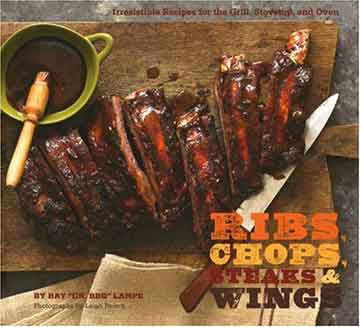
Explore More with AI
Nutrition
Nutrition information is automatically calculated, so should only be used as an approximation.
Recipe Testers’ Reviews
Recipes like these smoked beef back ribs come down to the rub and the cooking technique, and these don’t disappoint in either department. There’s a lot of waiting time, but low and slow allows the rub’s flavor to permeate the ribs, doing wonders for the texture of the meat.
The only problem I have with this recipe is the amount of grilling at the end. Instead of basting with the sauce, I warmed it up over low heat and served it on the side. That way, I could regulate how much or little to put on the ribs.
I also tried the ribs without the sauce to see the difference and found the rub is good enough that you don’t need any sauce. And if you do use barbecue sauce, be sure it’s low in salt, as the rub already has enough salt in it.
The first thing that came to mind while making this grilled beef back ribs recipe was how awesome it would be to make on a lazy summer day. Almost a zen-like kind of effort goes into this slow process. And with an outstanding result.
Here are some small adjustments that could make a good impact. When applying the rub by sprinkling and then pressing it into the ribs, the turbinado sugar simply rolled off. Most of the sugar was left on the prep surface.
This is a shame, as I suspect the sugar would have created a nice caramelized exterior. Perhaps if a mild light oil went on first, the mixture would adhere better. Alternately, light or dark brown sugar could be a substitute. The rub recipe made a hearty sum and I used only 1 cup with 1/2 cup saved for later.
My only criticism of the recipe is that I wanted the ribs to be more tender. This could have everything to do with my own error. My ribs were whole and very large, making wrapping them a bit difficult. I ended up stacking a couple on top of each other.
I did use strong coffee before wrapping the ribs in foil. At the end of cooking the coffee had evaporated. Good news, I thought. However, there could well have been a hole in the foil that prevented the necessary steaming. This may be why my test result was not as tender as expected. I would continue to stress the wrapping of the ribs as an essential step to ensure a tender result.
I used Bobby Flay’s barbecue sauce recipe. So good.
The spice quantities specified will make enough rub for about 3 batches of ribs. I see no reason why it won’t keep as long as all of the constituent spices—months, easily, if kept airtight. Perhaps I am salt-tolerant; I used 1/2 cup of salt and didn’t find the result overly salty.
The butcher in my local grocery store removed the membrane from the back of the ribs before packaging them, so I wasn’t bothered by that step. I’ve removed the membrane myself in the past, and it’s not that tough, but if you’re not so inclined, ask your butcher. They may do it for free.
Rather than cooking over a wood grill, I used a pellet smoker with a temperature sensor. I followed the recommended temperatures and timing closely and was pleased with the results. Don’t try to cut corners here! I’m sure the hour of foil-wrapped tenderizing is particularly important.
As for coffee with the ribs in the foil pack, I am not a coffee drinker, but reading “…if you’re the adventurous type…” is like waving a red flag at a bull for me. I have a jar of Folgers coffee crystals for cooking emergencies like this. It recommends 1 heaping teaspoon of crystals per 6 ounces of water. I used a heaping tablespoon and 4 ounces of water, so the coffee was definitely strong. I couldn’t taste coffee in the finished ribs.
Servings are hard to say. I served 2 with lots of leftovers. Some were removed from the bone and went into a very tasty pasta sauce, chopped coarsely. The recipe also works with short ribs but might be better for them with a longer cooking time.
I made the rub using Hawaiian sea salt, starting with 1/4 cup but ended up adding 1/4 cup more because I thought it was too sweet. I did use the coffee.
I’m fairly certain that the grill temperatures are a “close enough” guide just to make sure the ribs are smoked and tender. On the final cook, I only sauced half of the ribs so we could try them both ways. Honestly, I preferred the dry rub version, there’s enough fat on the ribs that they stay moist without a wet sauce.
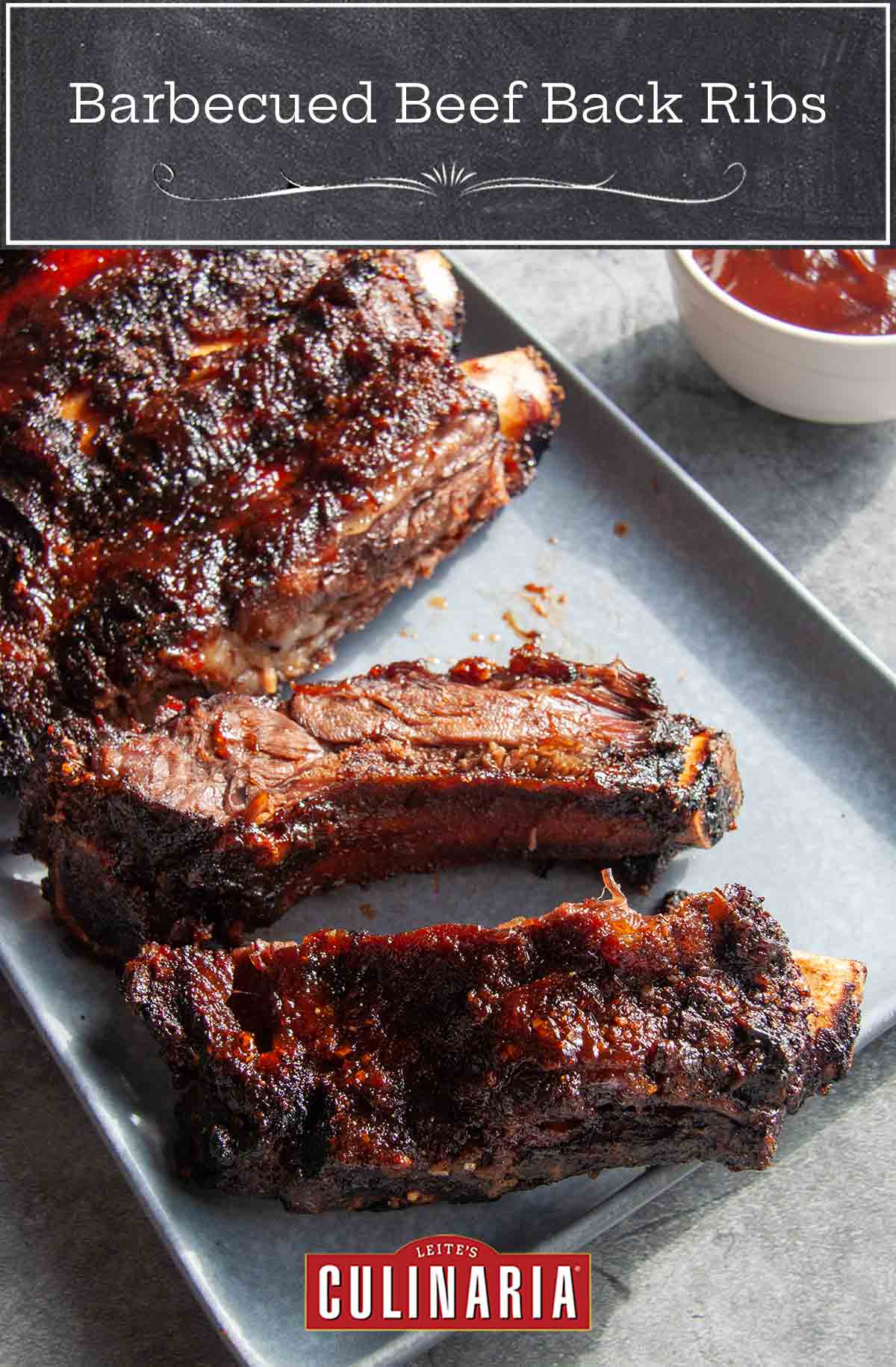
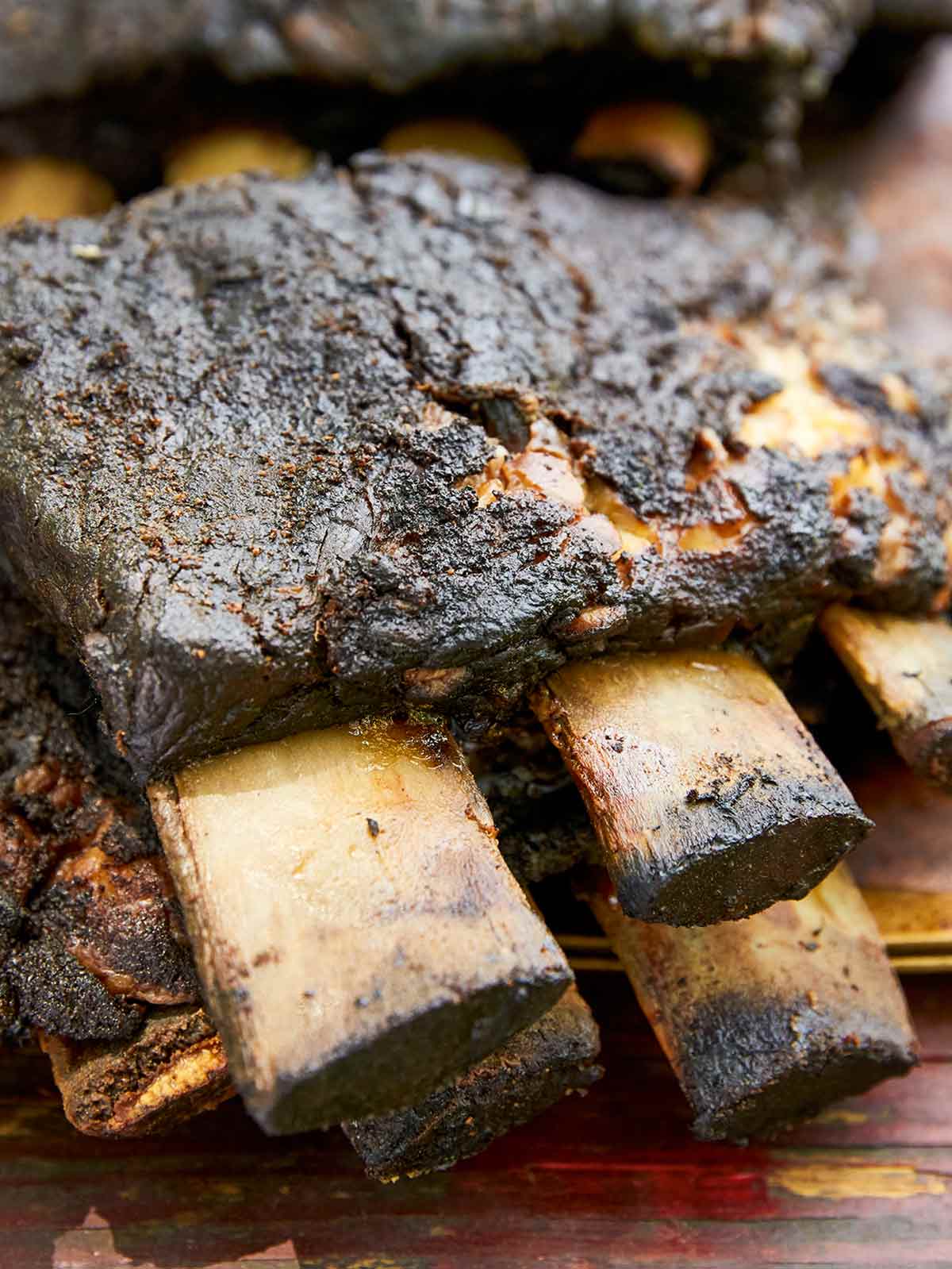
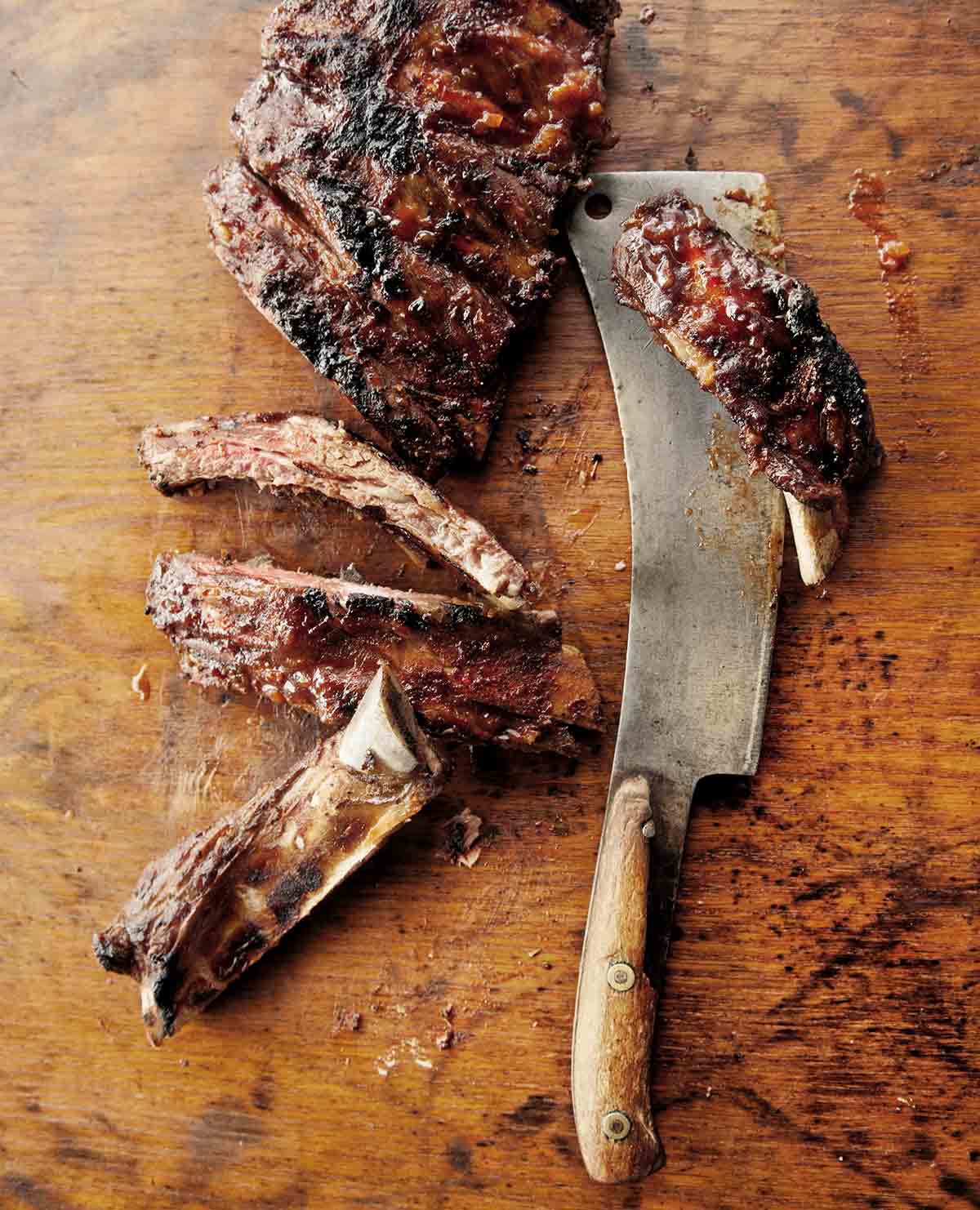













The ribs were tender, but the rub was way too salty. I would make them again but put less rub on the rubs or less salt in the rub recipe.
Della, I’m sorry to hear that. May I ask how much and what type of salt you used? Also, how much did you rub on the ribs?
I cooked these ribs last night. They came out so juicy and tender. The best ribs I’ve ever done.
I love hearing that, Ronald! Thank you.